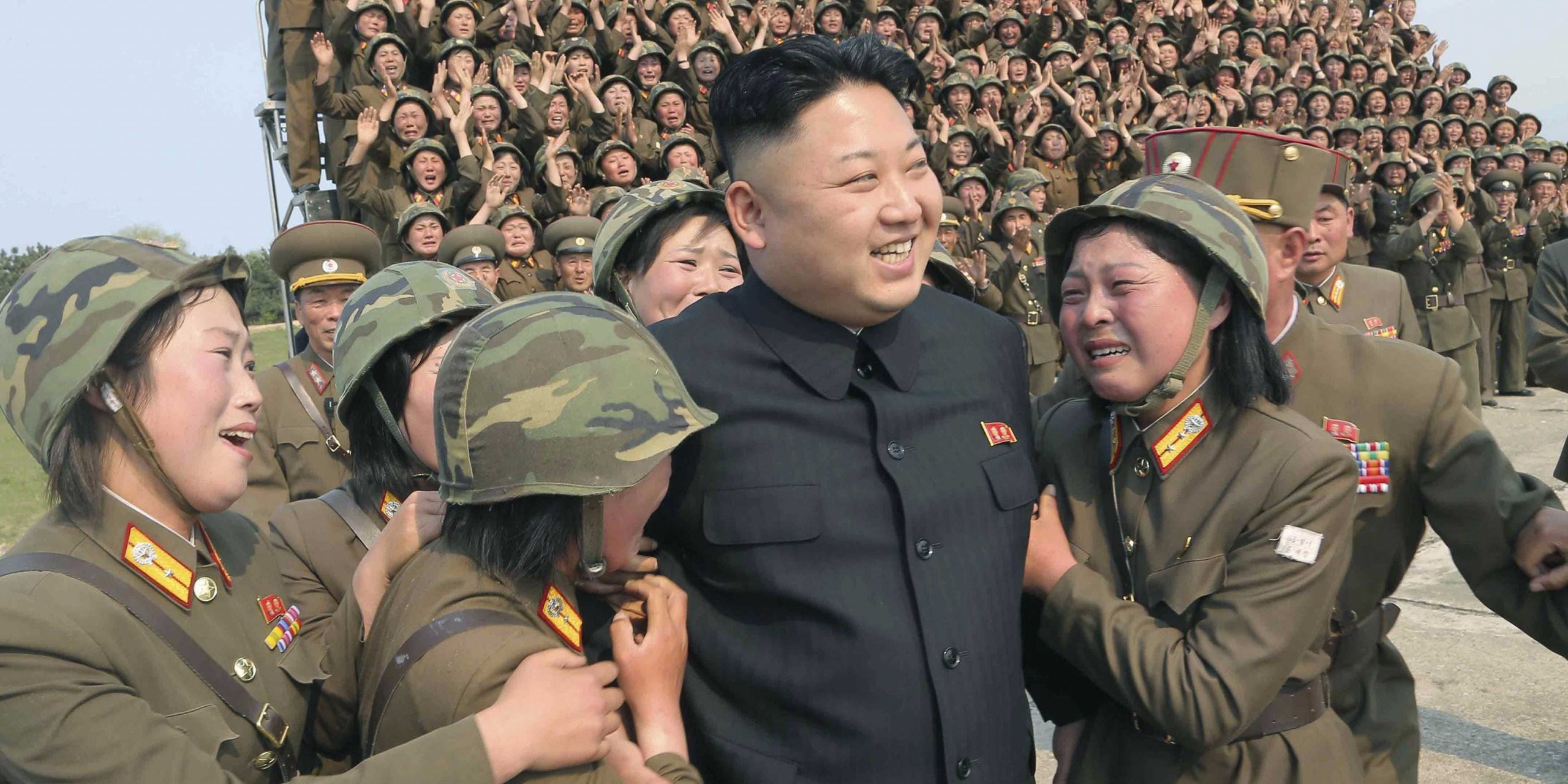- North Korean leader Kim Jong Un is regarded as one of the world’s most repressive and bombastic rulers.
- Though he met with US President Donald Trump twice, the historic summits didn’t result in direct action to curtail North Korea’s nuclear arsenal, and Kim’s rule continues to cause concern on the world stage.
- This month, rumors have surfaced that the dictator was possibly incapacitated or even dead after cardiovascular surgery, but South Korea has denied such reports. Kim hasn’t been seen in public since April 11.
- Despite his high-profile career, there is still relatively little known of the reclusive 36-year-old. Here’s what we do know about his life.
- Visit BusinessInsider.com for more stories.
Kim Jong Un assumed leadership at such a young age that many thought his rule would be doomed.
The current head of the family dynasty that’s ruled North Korea since the 1950s has overseen several nuclear tests, dozens of missile tests, and presided over his country’s shocking, uninvited entrance into the nuclear club.
After having the most tense, heated exchanges with a US commander in chief in his country’s history, Kim met with President Donald Trump twice.
Between threats of nuclear annihilation, brinkmanship, and attacks on South Korea, Kim has kept a firm grip on power throughout, and his people have very few freedoms.
On April 15, Kim missed a ceremony commemorating his grandfather before reports surfaced that he had suffered complications in cardiovascular surgery, sparking questions about his health and whereabouts.
Though some reports cited sources concluding Kim was incapacitated or had even died, South Korean officials and media denied such reports, even pointing to a thank-you note supposedly written by the leader as proof he was alive as of Monday.
With all this attention, still relatively little is known of Kim. But thanks to a new book from Washington Post Beijing bureau chief Anna Fifield, "The Great Successor," we now know more about his secretive childhood.
Here's how Kim grew to be one of the world's most intimidating dictators.
Paul Szoldra, Jeremy Bender, Gus Lubin, and Veronika Bondarenko contributed to previous versions of this story.
Kim Jong Un was born on January 8 — 1982, 1983, or 1984.
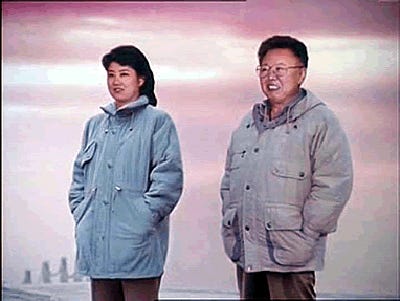
His parents were future North Korean dictator Kim Jong Il and his consort, Ko Young Hee. He had an older brother named Kim Jong Chul and would later have a younger sister named Kim Yo Jong.
While Kim Jong Un's official birth year is 1982, various reports suggest that the year was changed for symbolic reasons, including that it was 70 years after the birth of Kim Il Sung and 40 years after the birth of Kim Jong Il.
But when the US Treasury Department sanctioned Kim Jong Un in 2016, the agency listed his official date of birth as January 8, 1984.
Kim, here with his mother, lived at home as a child.

During this period, North Korea was ruled by "Great Leader" Kim Il Sung. While Kim Jong Il was the heir apparent, Kim Jong Un's path to command was far less certain.
Then it was off to Switzerland to attend boarding school.

Called "Pak Un" and described as the son of an employee of the North Korean embassy, Kim Jong Un attended an English-language international school in Gümligen, near Bern.
He lived in the suburbs with his aunt, Ko Yong Suk, his uncle, Ri Gang, and their three children, according to Anna Fifield's book, "The Great Successor: The Divinely Perfect Destiny of Brilliant Comrade Kim Jong Un."
Some former classmates described him as a quiet student who spent most of his time at home, but had a sense of humor.

"He was funny," former classmate Marco Imhof told The Mirror in 2011. "Always good for a laugh."
"He had a sense of humor; got on well with everyone, even those pupils who came from countries that were enemies of North Korea," another former classmate told the German newspaper Welt am Sonntag. "Politics was a taboo subject at school ... we would argue about football, not politics."
But others pained Kim as an unremarkable boy who was bad at school and lashed out at others.
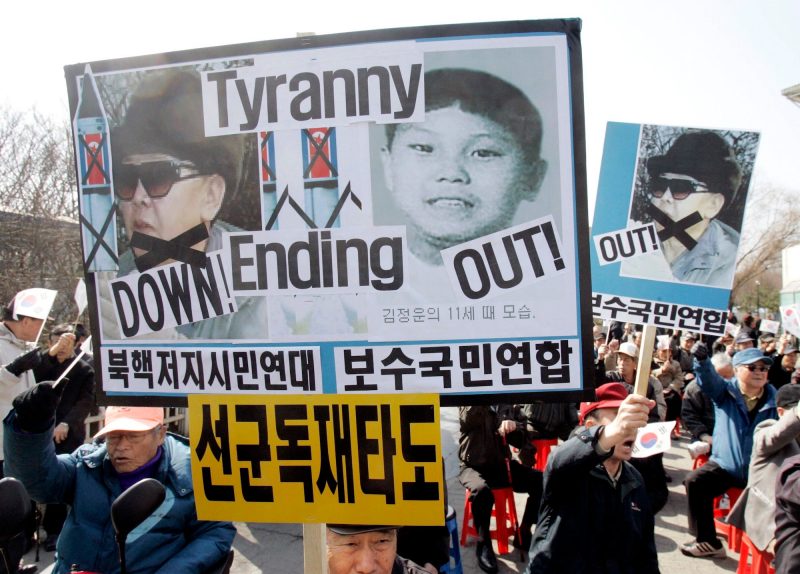
According to Fifield's book, classmates said Kim was embarrassed to answer questions in class and frequently lashed out because he struggled to speak in German.
"He kicked us in the shins and even spat at us," a former classmate told her.
The book also outlines how Kim was introverted, avoided girls, and lived in Adidas tracksuits with Nike sneakers.
Kim Jong Un loved basketball and idolized Michael Jordan.

The young Korean reportedly had posters of Jordan all over his walls during his Swiss school days. Although Kim Jong Un was overweight and only 5-foot-6, he was a decent basketball player.
"He was a fiercely competitive player, very explosive," former classmate Nikola Kovacevic told The Mirror. "He was the play maker. He made things happen."
"He hated to lose. Winning was very important," said former classmate Marco Imhof.
He also had a "fantastic" collection of Nike sneakers.
After school in Switzerland, he returned home for military schooling.
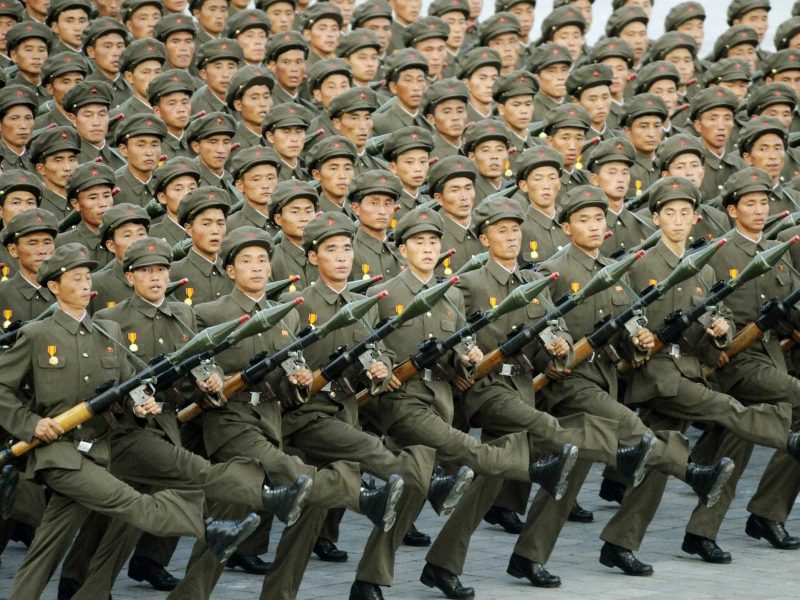
Upon his return to North Korea, Kim Jong Un attended Kim Il Sung Military University with his older brother. Some reports say they started to attend their father's military field inspections around 2007.
While his father faced death, Kim Jong Un was rapidly promoted up the chain of political and military leadership, despite having little experience in either.
He was made a four-star general, deputy chairman of the Central Military Commission of the Workers' Party, and a member of the Central Committee, according to the BBC.
Kim Jong Un has a theme song known as "Footsteps."
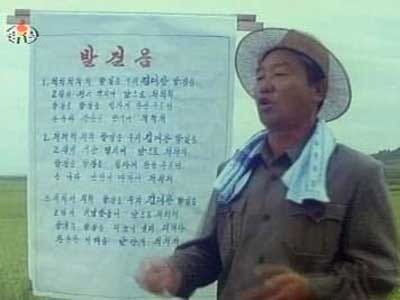
"Footsteps" looks and sounds like a propaganda song from the Soviet Union.
The song calls people to follow in "Our Admiral Kim's footsteps." Here's a sampling of the lyrics:
Footsteps, footsteps ... spreading out further the sound of a brilliant future ahead ... tramp, tramp, tramp, ah, footsteps.
Many North Koreans see Kim Jong Un as a youthful version of "Great Leader" Kim Il Sung.
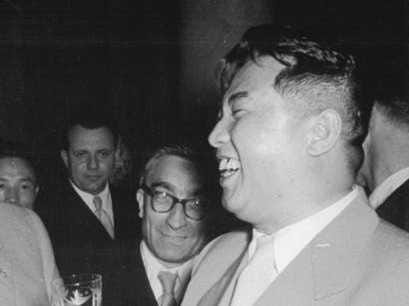
Kim bears a clear resemblance to his grandfather, Kim Il Sung, in appearance, haircut, and mannerisms.
Rumors had circulated that Kim Jong Un had received plastic surgery to enhance the resemblance even further, although the North finally responded and called the allegations "sordid hackwork by rubbish media."
"The false report ... released by enemies is a hideous criminal act which the party, state, army and people can never tolerate," said the official Korean Central News Agency.
After his father died, Kim Jong Un was quickly declared "Supreme Leader" of North Korea.

When Kim Jong Il died of a heart attack on December 17, 2011, the young Kim Jong Un inherited the world's fourth-largest military, a nuclear arsenal, and absolute control over North Korea.
He took over ahead of his older brother Kim Jong Chol, whom their father thought was "effeminate" and weak. His other brother Kim Jong Nam apparently said negative things about the regime, according to The Australian. He was killed in 2017, reportedly on the orders of North Korea.
Taking the reins of the country when he was around 30, Kim Jong Un was the youngest head of state in the world when he took power.
Some originally believed that Kim Jong Un's aunt and uncle were actually calling the shots.
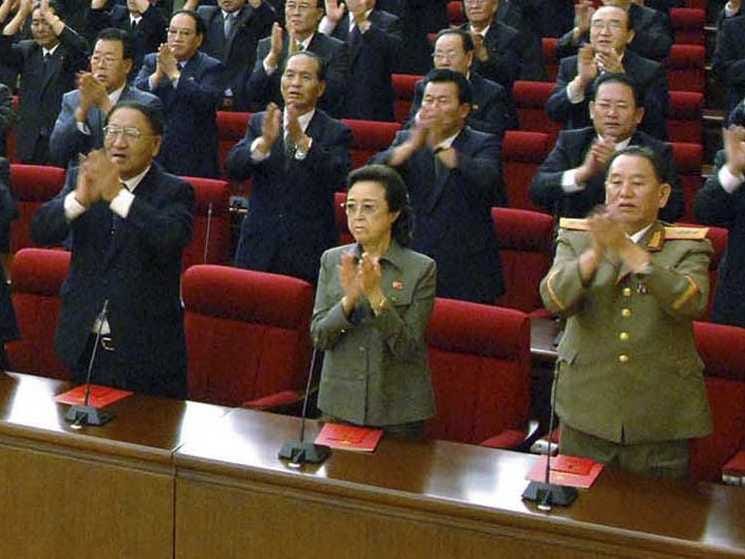
Among Kim Jong Un's most trusted advisers were his aunt Kim Kyong Hui and her husband, Jang Sung Taek, both 66. The couple was reportedly ordered by Kim Jong Il to control the country's military and help the young leader consolidate his position while he gains more experience.
At a meeting of the DPRK Workers' Party, both were photographed sitting close by. Their most important job, it seems, is to push his role as a powerful figure among some generals who do not trust him, according to The Telegraph.
But at the end of December 2013, Kim Jong Un had his uncle and his uncle's family executed, apparently in a bid to stop a coup against his rule.
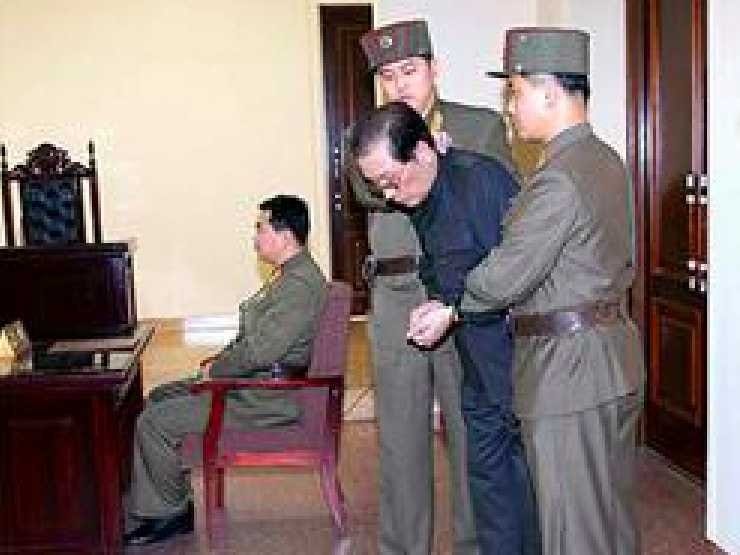
On December 12, 2013, Kim Jong Un had his uncle Jang Sung Taek executed. He was charged with having tried to take control of North Korea through a military coup.
Following the uncle's execution, there were reports that Kim Jong Un continued to purge the rest of the uncle's family.
But North Korea's ambassador to the UK denied that Jang Sung Taek's family was also executed. Instead, the ambassador claimed that only Jang Sung Taek was killed by firing squad following a trial.
He's married to a former cheerleader and may have three kids.
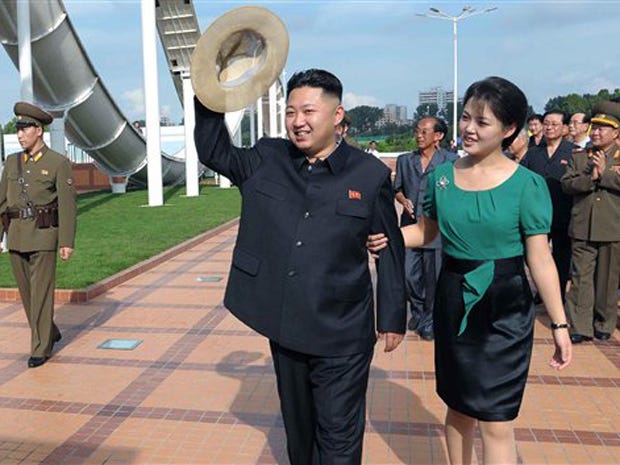
Leaders in the Hermit Kingdom are often very secretive when it comes to their significant others, but Kim Jong Un often has his wife join him and allows photographs.
North Korean media revealed in July that he was married to Ri Sol Ju - a former cheerleader and singer - but no one knows exactly when they were married, according to NBC News.
South Korean intelligence believe the couple probably married in 2009 and had their first child in 2010.
Ri Sol Ju reportedly gave birth to a girl in 2013, and is believed to have had a third child in 2017.
Kim Jong Un lived out a childhood fantasy when former Chicago Bulls star Dennis Rodman visited.

Everyone in the family is apparently a huge Chicago Bulls fan.
His father owned a video library of "practically every game Michael Jordan played for the Chicago Bulls." Kim Jong Il tried unsuccessfully to get Jordan to visit in 2001.
Kim Jong Un had tons of Jordan posters as a kid. Brother Kim Jong Chol was photographed as a child wearing a Bulls Jersey: No. 91 - Rodman.
In the first years of his rule, things didn't go so well.
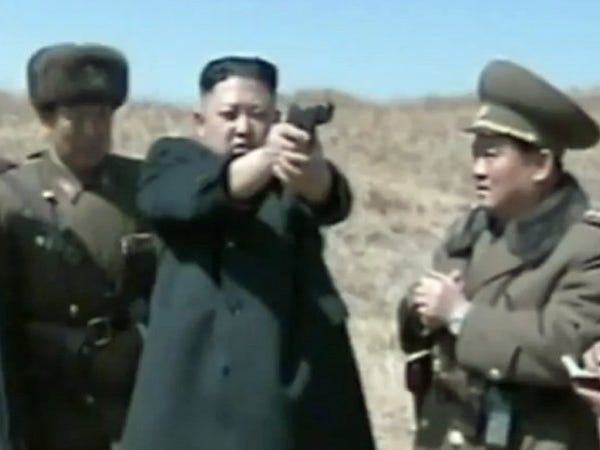
In 2013, Kim was reportedly the target of an assassination attempt. South Korean intelligence believes the young leader was targeted by "disgruntled people inside the North" after he demoted a four-star general, which resulted in a power struggle.
Perhaps as a means of reasserting control, Kim Jong Un has become extremely belligerent, shutting down all links with South Korea and threatening thermonuclear war against his neighbor and the US. His father and grandfather used to make these threats all the time without following through.
Kim Jong Un continued to be belligerent with South Korea and the West throughout his rule in hopes of bolstering his authority.
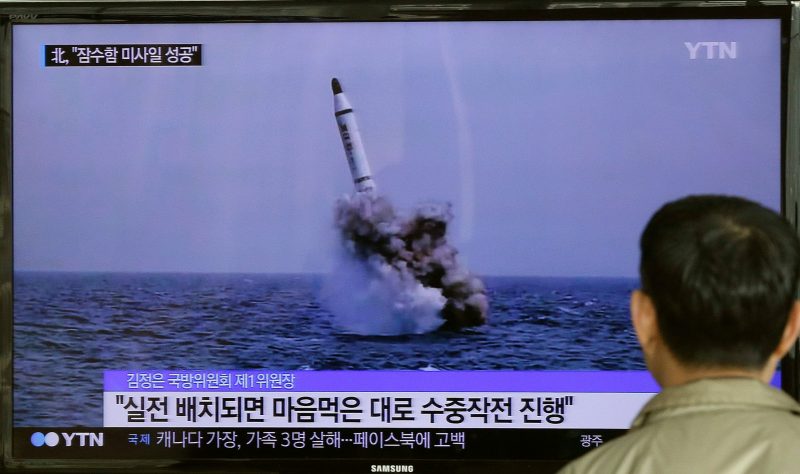
North Korea has continued to test ballistic missiles and nuclear devices under Kim Jong Un's rule, despite the threat of sanctions. In 2012, the country launched its first satellite into space.
Since Kim Jong Un has taken over, the country has continued to push ahead with its construction of ballistic and nuclear weapons.
In 2013, North Korea conducted its third-ever nuclear test and its first under Kim Jong Un. Since then, Kim Jong Un has overseen three additional nuclear tests, including the test of a hydrogen bomb, which is much more powerful, and dozens of missile tests, including missiles with the range to reach the US.
The nuclear tests and international condemnations continued into 2017.
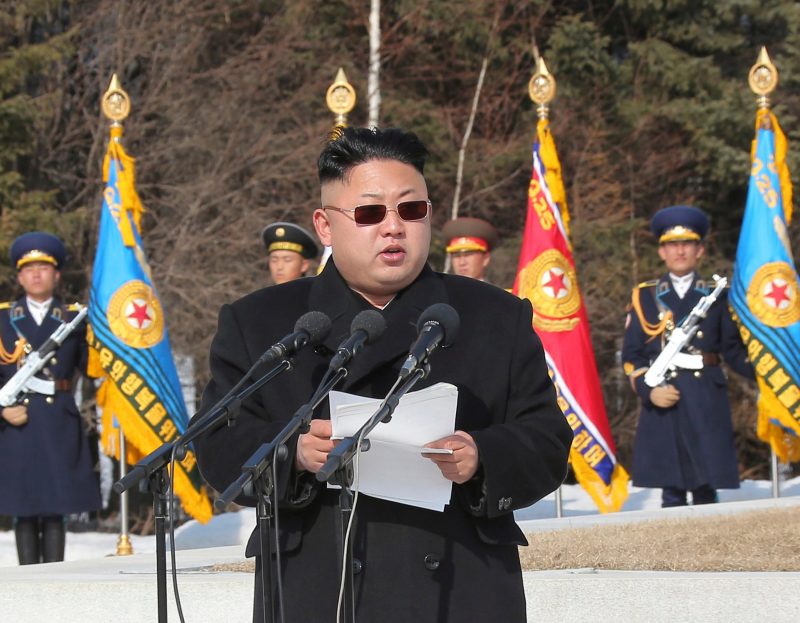
On September 3, 2017, North Korea conducted its sixth and largest nuclear test, which experts estimate was many times the size and of the bombs the US dropped on Hiroshima and Nagasaki to close out World War II. Pyongyang claims the test was a miniaturized hydrogen bomb.
Kim's sprint to nuclear capability, and each test along the way, drew international condemnation.
In response to North Korea's continued nuclear testing, world leaders have strongly come out against the Kim regime. Even Kim's treaty and ideological allies in China and Russia have signed on to sweeping sanctions and condemnations against North Korea's nuclear program.
That test was followed up by a series of increasingly successful ballistic missile launches that have landed in the Sea of Japan. North Korea has also successfully test launched a ballistic missile from a submarine.
The assassination of Kim's half-brother Kim Jong-Nam in a Malaysian airport led to a global investigation of North Korea's involvement.
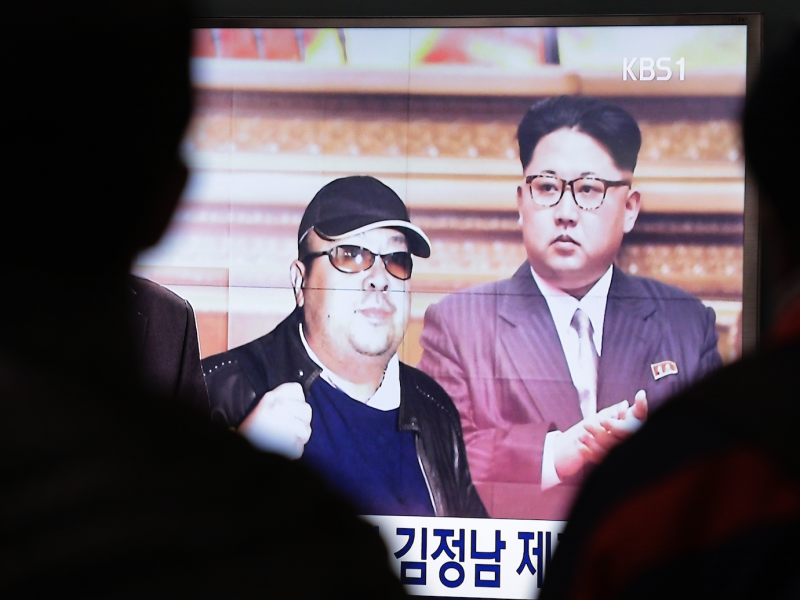
On February 13 2017, Kim's half-brother Kim Jong Nam was fatally poisoned in a Kuala Lumpur airport.
Amid worldwide suspicion of North Korean involvement, Malaysian police conducted an autopsy against the wishes of the Kim's government and named a North Korean official and several other nationals as suspects, alongside two foreign women believed to be working as hired assassins.
By March, the conflict between the former allies escalated after Malaysia directly accused the North Korean government of orchestrating the murder. North Korea issued an order that prevented Malaysian citizens from leaving the country while Malaysia responded by canceling visa-free entry to North Koreans.
In the Trump era, conflict with North Korea reached a new high.
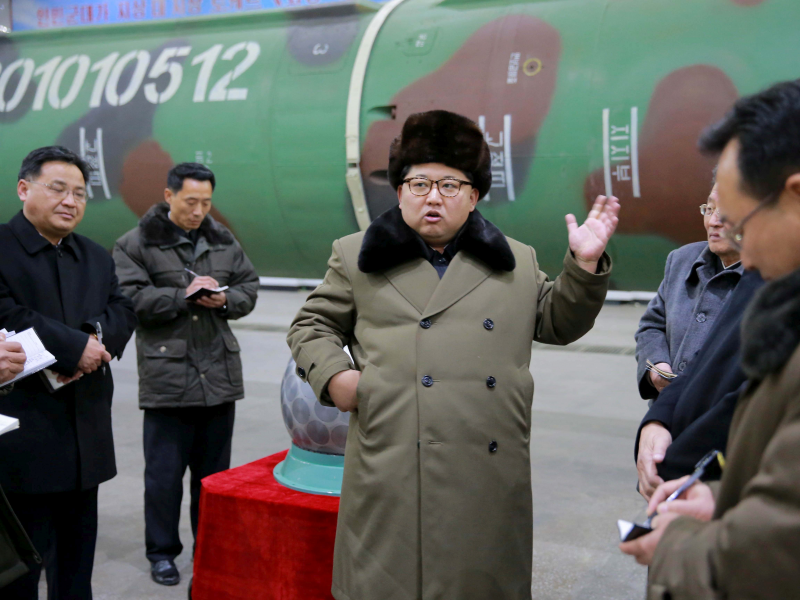
Shortly after taking office, President Donald Trump reportedly labeled North Korea the single biggest threat to the US.
Breaking with former President Barack Obama's attempts at diplomatic negotiation via "strategic patience," the Trump administration started demanding North Korea's immediate de-nuclearization and hinted at the possibility of a preemptive military strike if its impulsive leader does not comply.
In April 2017, Kim retaliated by unsuccessfully test launching another nuclear missile at the same time that US Vice President Mike Pence was scheduled to discuss the country's arms program in Seoul, South Korea. After the US threatened a "pretty significant international response" in the event of another test, a North Korean envoy warned that nuclear war could break out at "any moment."
And in November 2017, North Korea has tested intercontinental-range ballistic missiles with the express purpose of threatening the US mainland - something which Trump swore he would prevent.
Throughout 2017 and early 2018, North Korea continued its nuclear threats, and Trump continued to taunt Kim. In December 2017, then-National Security Adviser H.R. McMaster said the chance of war was "increasing every day."
But then 2018 ushered in the possibility of peace on the Korean peninsula.
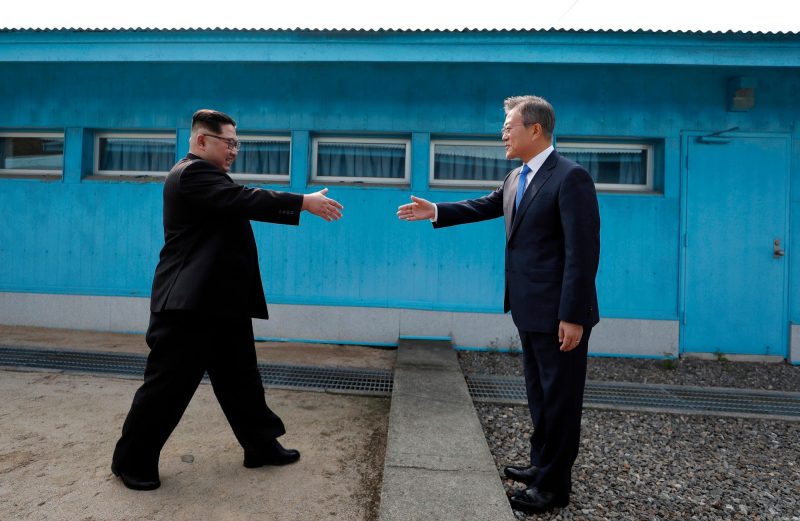
A secret trip to Beijing in March 2018 marked Kim's first known trip outside North Korea since becoming supreme leader in 2011 and a historic departure from years of deteriorating relations with China.
Following up on his New Year's address that called for "peace and stability" between the two nations, Kim was the first leader to set foot on South Korean soil as part of a summit with South Korean President Moon Jae-in.
The two leaders agreed to seek an end to the armistice agreement and sign a peace treaty, as well as achieve "complete" denuclearization.
Other measures that were announced included ending all propaganda broadcasts and leaflet drops along the border, creating a joint liaison office for the two countries, and holding four-way talks with the US and China.
Kim has continued his country's close relationship with China throughout his reign.
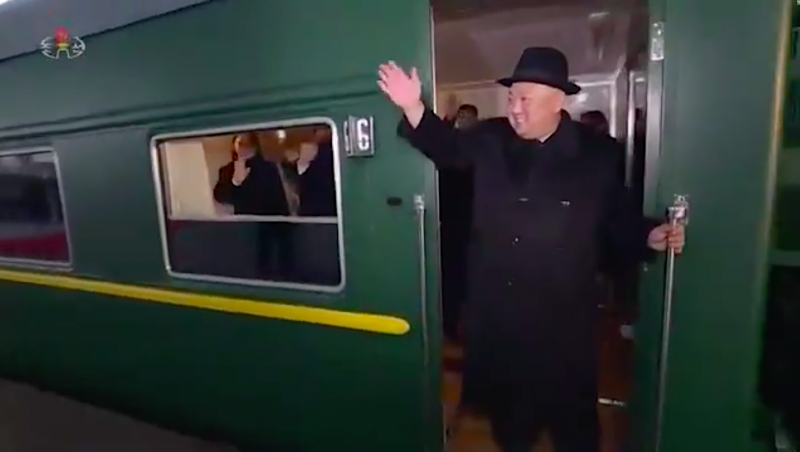
In January 2019, Kim Jong Un rode his personal armored train to China to spend his 35th birthday with Chinese President Xi Jinping. It was Kim's fourth trip to China in a year.
He rode his personal armored train to Beijing for a four-day summit with China, which is North Korea's most important trading partner and a buffer against pressure from the US.
After a fiery start, relations between Trump and Kim softened to suggest a new era for the two countries.

After Trump tweeted in January 2018 that his nuclear button was bigger than Kim's, the US placed what Trump described as the "heaviest ever" sanctions against North Korea in February, which the country decried as "an act of war."
In March 2018, Trump accepted Kim's offer for a meeting to discuss denuclearization, which would later result in a historic first-time meeting between the two leaders and the signing of an agreement that called for establishing new US-North Korea relations and supporting building a stable peace regime on the Korean Peninsula.
But many experts were wary that North Korea wasn't held to strict, specific requirements to denuclearize.

Though the meeting was widely received as a positive development for global relations, many experts and some Trump administration officials were reportedly frustrated with the slow-moving reality of denuclearization and concerned with the president's "very public embrace" of Kim.
After intelligence processed in late 2018 suggested the rogue state has privately continued its nuclear activities, officials grew wary of Kim's previous promises for progress that eventually gave way to threats toward the US as relations with China and South Korea blossomed.
Trump announced during his February 2019 State of the Union address that he and Kim would meet in Vietnam for a second summit, and remained optimistic about Kim's intentions.
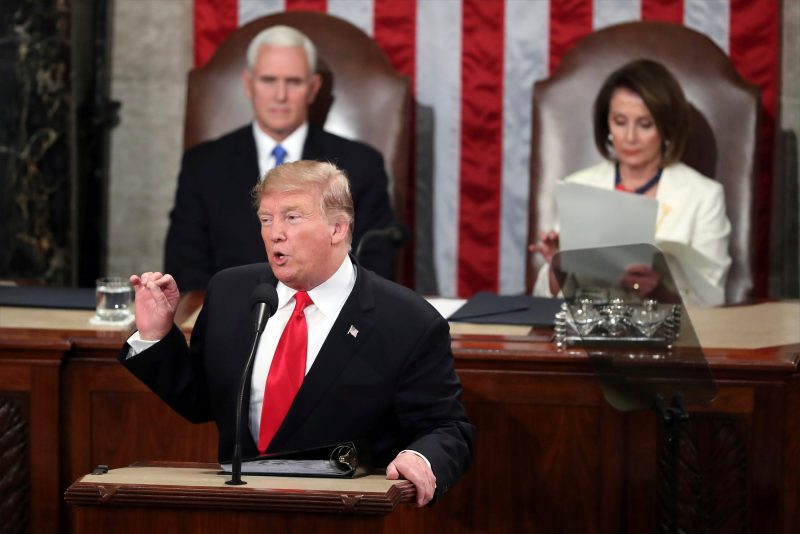
"As part of a bold new diplomacy, we continue our historic push for peace on the Korean Peninsula," Trump said in his address. "Our hostages have come home, nuclear testing has stopped, and there has not been a missile launch in 15 months."
Trump's comments were in harsh contrast to widespread reports the US intelligence community had seen little progress towards denuclearization after the June 2018 summit. A January 2019 report from the director of national intelligence concluded Pyongyang is "unlikely" to give up its nuclear weapons program.
Despite the indications that progress had fizzled, Trump touted optimism.
"If I had not been elected President of the United States, we would right now, in my opinion, be in a major war with North Korea with potentially millions of people killed," Trump added. "Much work remains to be done, but my relationship with Kim Jong Un is a good one. And Chairman Kim and I will meet again on February 27 and 28 in Vietnam."
Ahead of Trump's arrival to the summit, reports again turned to Kim's mysterious habits and travel logistics.
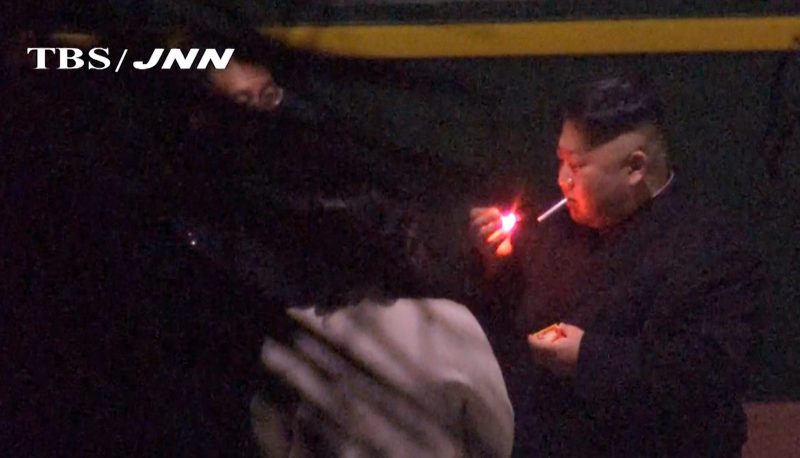
Kim was spotted by hidden cameras smoking a cigarette in rural China after most of his nearly three-day, 2,000-mile train journey to the summit in a rare candid glimpse of the leader standing with his sister and an aide nearby.
His choice to take a train to the summit was still up for speculation, with analysts floating several possibilities on the trip as possible commentary on North Korea's relations with China, one saying the leader didn't want to look needy.
But the second summit largely ended in failure.

Trump said the summit ended early because Kim wanted total sanctions relief in exchange for only a few nuclear site closures.
North Korea contradicted Trump's reason for the collapsed summit in a rare press conference, and true to form, state media hailed the summit as "extraordinary" and "successful."
It's unclear where Kim will take North Korea next.
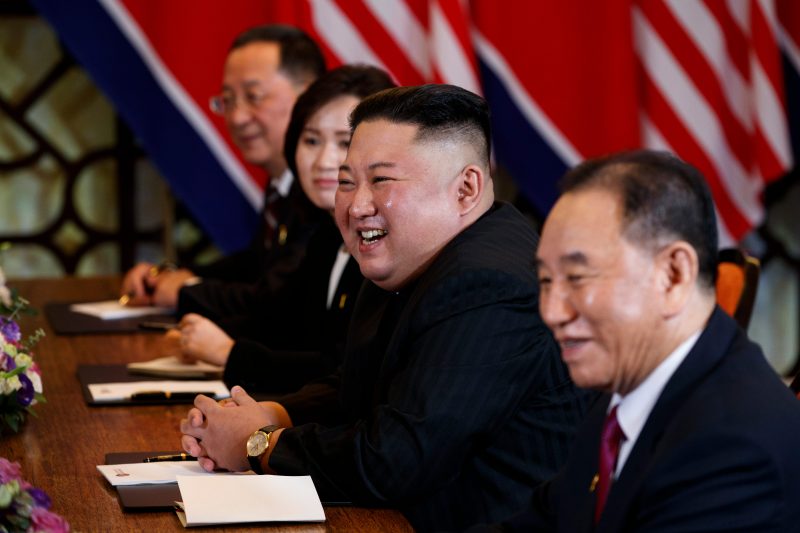
The US and North Korea seem stalled on sanctions and nuclear tests, but the two leaders remain somewhat friendly - much to the concern of foreign policy experts.
Trump praised a "beautiful letter" he received from Kim this summer, which was reportedly birthday greetings for the president's 73rd on June 14.
"I think North Korea under [Kim's] leadership has tremendous potential," Trump told reporters.
In October 2019, North Korean media released photos of Kim riding a white horse, and the propaganda shots were full of symbolism.
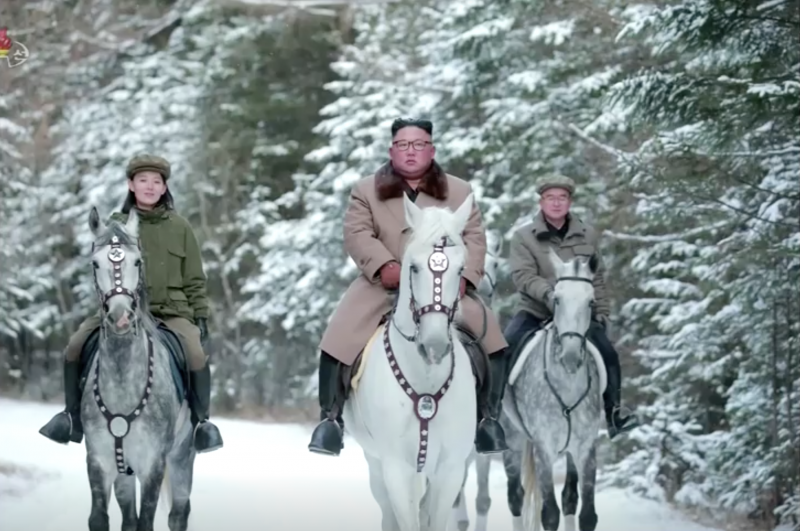
As Business Insider's Ellen Ioanes wrote, the photoshoot was on Mt. Paektu, a symbolically important mountain for the Kim family. Such releases often herald a major military announcement, and the photos had experts worried that North Korea had a nuclear advancement to unveil.
Nuclear negotiations between the US and North Korea have stalled.
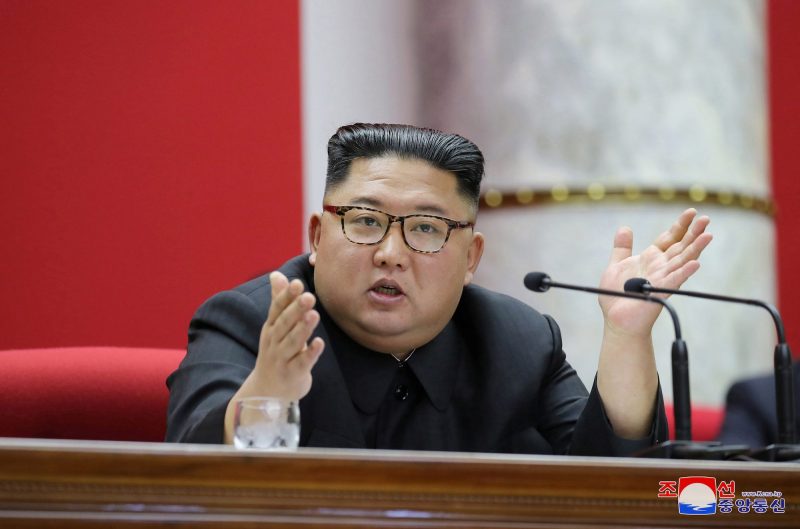
The US is still sanctioning North Korea, and fears grew that the country would conduct another nuclear test by the end of 2019, but the year closed without a major incident.
North Korea didn't acknowledge its supreme leader's 36th birthday on January 8.
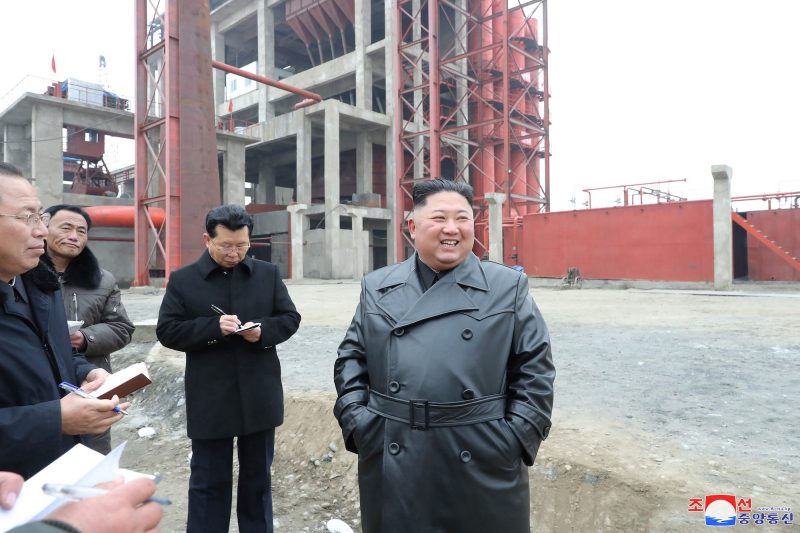
Keeping with the mystery around when Kim's birthday is, the Hermit Kingdom did nothing to mark the day, NK News reported.
An analyst told the outlet that Kim may be waiting until the country, and his leadership, is more stable before officially announcing when his birthday is or celebrating it as a national holiday.
In April 2020, the leader was widely rumored to have undergone heart surgery that left him gravely ill, with some reports even saying he had died.
US intelligence indicated in late April that Kim could be incapacitated. Though the South Korean government denied such reports, news media in Japan reported days later that he was in a "vegetative state." On the same day, a Hong Kong-based outlet cited a source saying he was dead.
All reports on the leader's health remain unconfirmed, but that didn't stop reports from raising questions about the South Korean line of succession.

